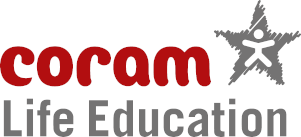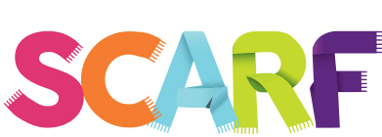At home with SCARF - Activities for 5 to 7 year-olds
What your child will be learning about
- Feelings
- Special people
- Being a good friend
What you can talk about together
- When was the last time you hurt yourself?
- How did you feel?
- Is it just our bodies that get hurt? [feelings can be hurt]
- Think of a time when your feelings were hurt. How did this make you feel?
- Talk about feelings being comfortable/uncomfortable rather than good/bad
- Can you put a plaster on a hurt feeling?
- What can you do to heal that hurt feeling?
- Can you help a friend who is feeling sad?
Note to parents/carers: take care to frame ideas in positive language. For example, if a child says ‘Don’t be mean to your friends,’ acknowledge and praise this response and re-word it into something like ‘… be kind to your friends.’
What you can do together
Activity 1 - A receipe for friendship
What are the ‘ingredients’ that make a good friendship? Discuss with your child what is important in a friendship. Write your ideas down - recipe style!
- Share
- Take turns
- Be kind
- Don't leave people out
- Look out for someone who's feeling lonely
- Play together
Sometimes we can fall out with friends so you could think of another recipe – a recipe for making up.
- Say sorry
- Shake hands
- Have a hug
- Invite someone to join in (a game or a conversation)
- Do something special to show you really want to be their friend again
Write and draw about your friends on Harold the giraffe's special activity sheet:
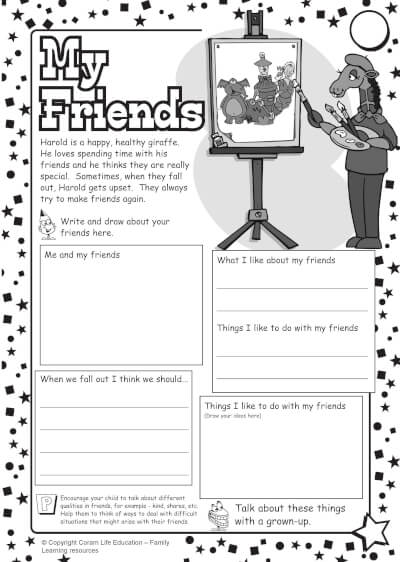
(Click on the image to make it bigger or to print.)
Activity 2 - Sad and happy
How would you feel if:
- You were going to party?
- You were at a party but nobody wanted to play with you?
- Some of your friends were going to a party but you weren't invited?
- Somebody called you a nasty name?
- Somebody said something nice about you?
Look at photos in a book or magazine and see if you can work out how people are feeling. How can you tell?
Summarise by saying that we can show our feelings even without speaking and that others can tell how someone is feeling by looking at their face or body.
Explain that this is sometimes called body language. Being able to ‘read’ a person’s body language is a useful skill as it helps us to understand how they are feeling and respond to them in a suitable way.
Use magazine cuttings or photos and stick them to a piece of paper. Use as many words as you can to describe how the people of the photos are feeling, e.g. happy, overjoyed, elated, smiley, fantastic…
Or you could make this feelings mask:
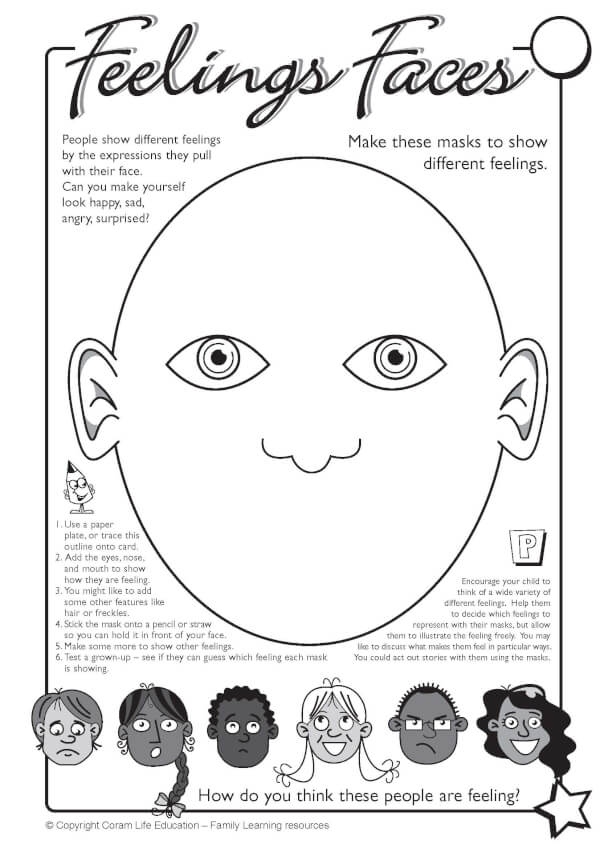
(Click on the image to make it bigger or to print.)
Activity 3 - My special people
Families come in many different forms. Families are made up of people who are special to us.
- Who are our special people?
- What do our special people do to make us feel special?
- Who are the special people outside our family?
- What groups do we belong to (friendship groups, place of worship etc.)
Draw a picture of a large balloon on a piece of paper. Make the balloon big enouth to fill the paper. Then draw and/or write your special people in it.
Activity 4 - My chatterbox
Make a chatterbox! Find out how, below...
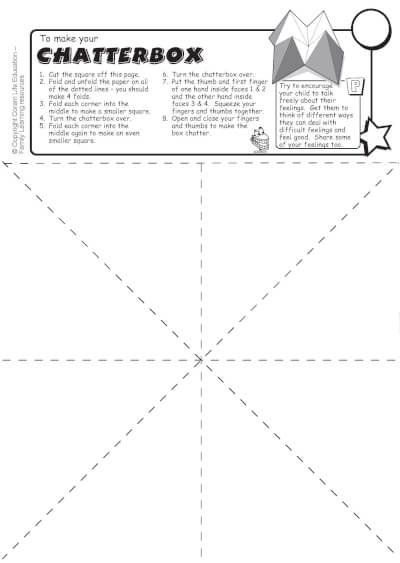
(Click on the image to make it bigger or to print.)
Try to encourage your child to talk freely about their feelings. Get them to think of different ways they can deal with difficult feelings and feel better. Share some of your feelings, too.
